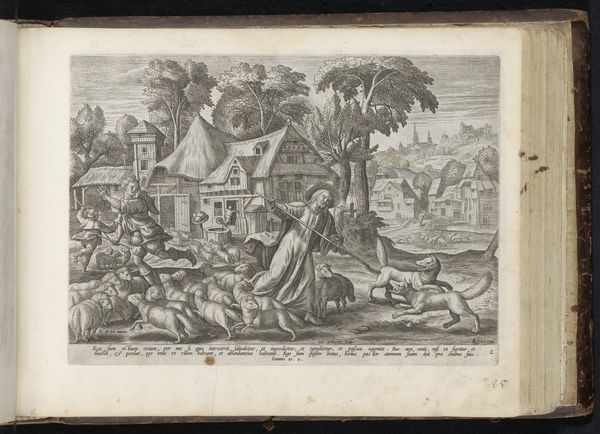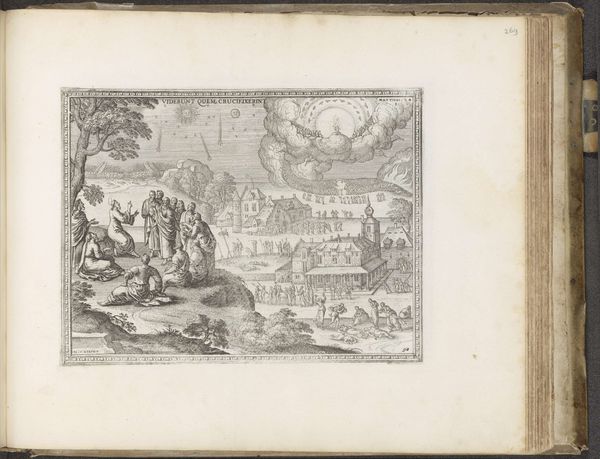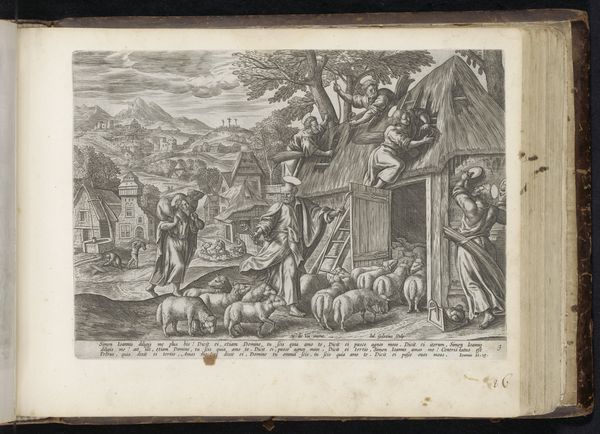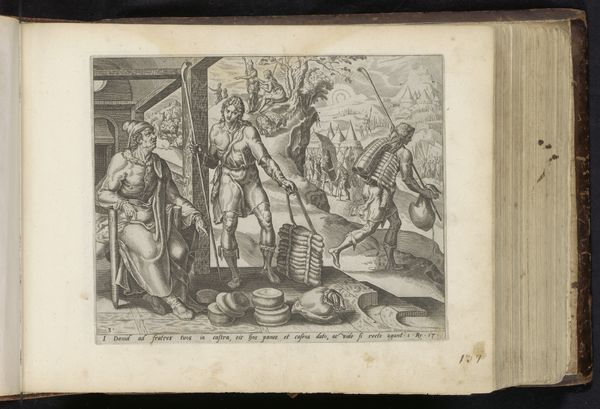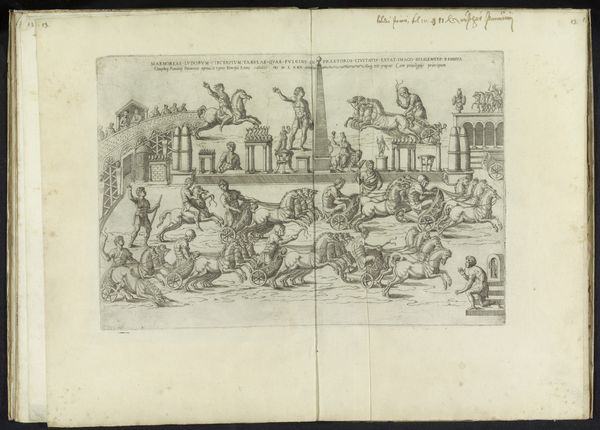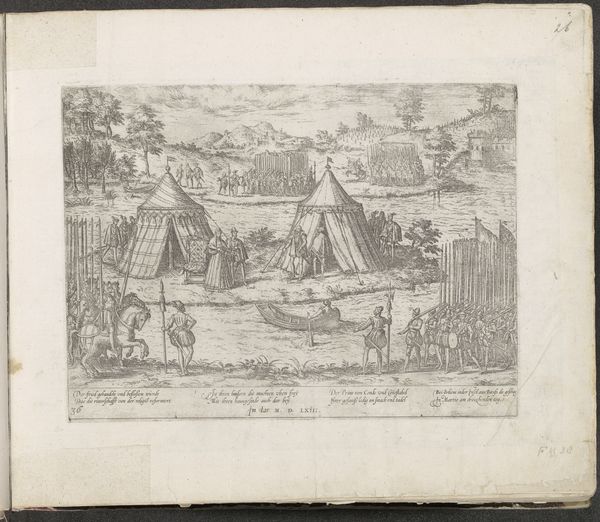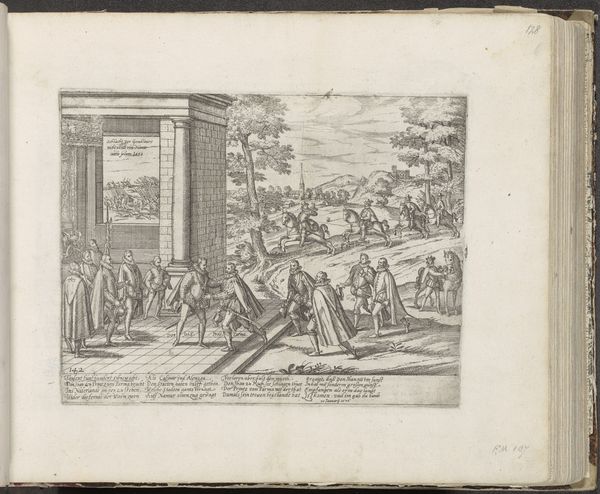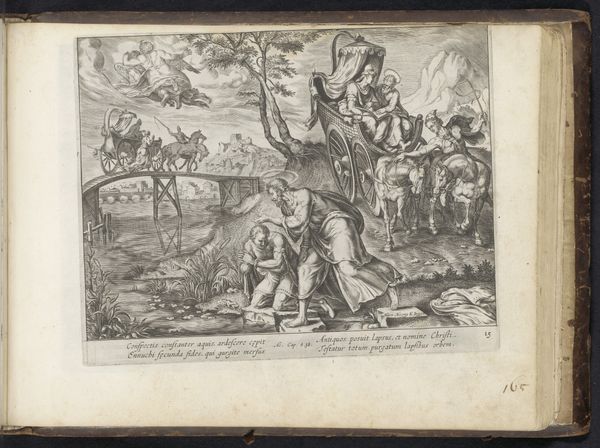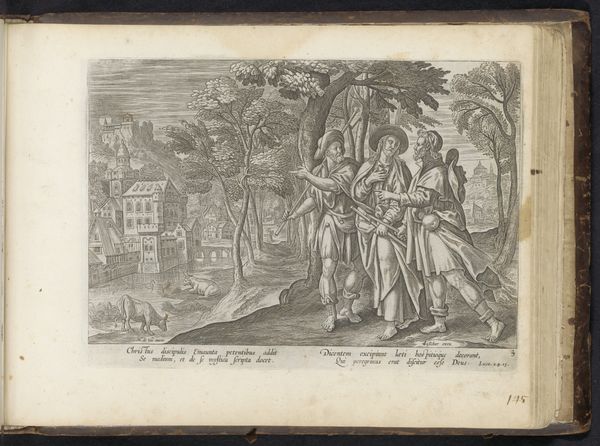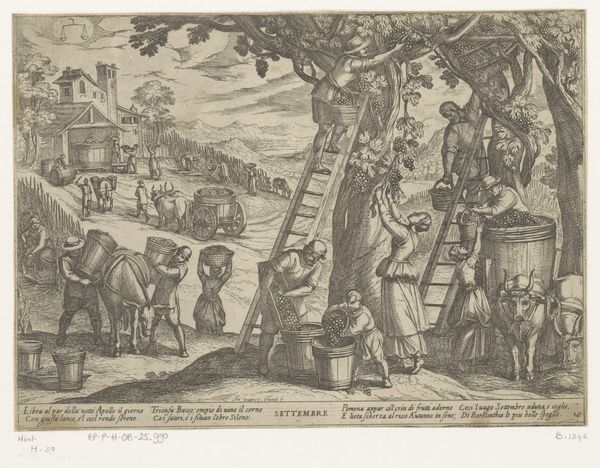
print, engraving
#
narrative-art
# print
#
landscape
#
figuration
#
coloured pencil
#
genre-painting
#
northern-renaissance
#
engraving
Dimensions: height 204 mm, width 287 mm
Copyright: Rijks Museum: Open Domain
Julius Goltzius made this engraving, ‘Slechte herders’, using a technique that was relatively new at the time. Engraving involves using a tool called a burin to cut lines directly into a copper plate. Ink is then applied to the plate, and the surface wiped clean, leaving ink only in the engraved lines. The plate is then pressed onto paper, transferring the image. This printmaking process allowed for the relatively quick reproduction of images, making art accessible to a wider audience and contributing to the spread of knowledge and ideas. Looking closely, you can see the precision and detail achievable through engraving; Goltzius captures a scene of labor and leisure, reflecting the social dynamics of his time. The image of the ‘bad shepherds’ suggests themes of work, morality, and perhaps a critique of social structures. By understanding the material and process behind this print, we gain insight into both its artistic value and its role in the broader context of 16th-century society.
Comments
No comments
Be the first to comment and join the conversation on the ultimate creative platform.
